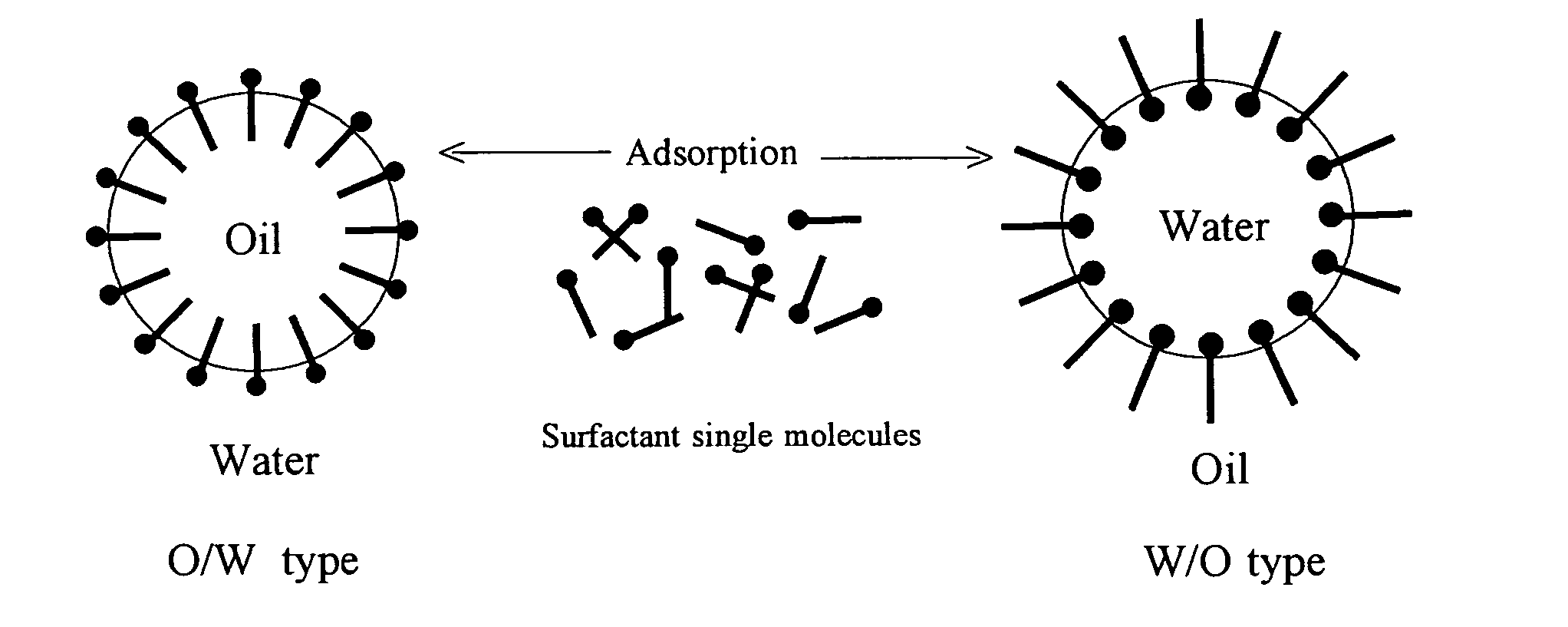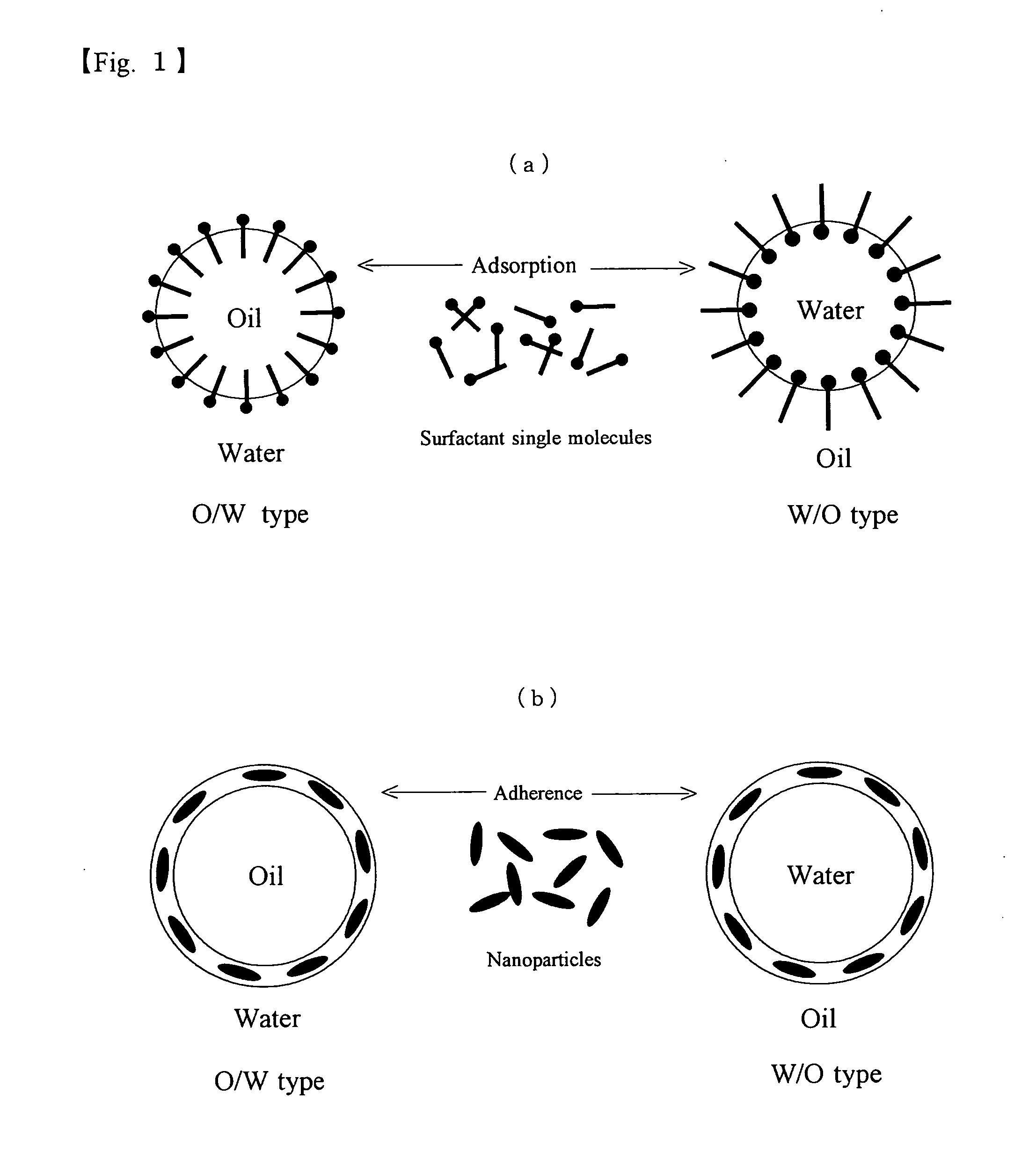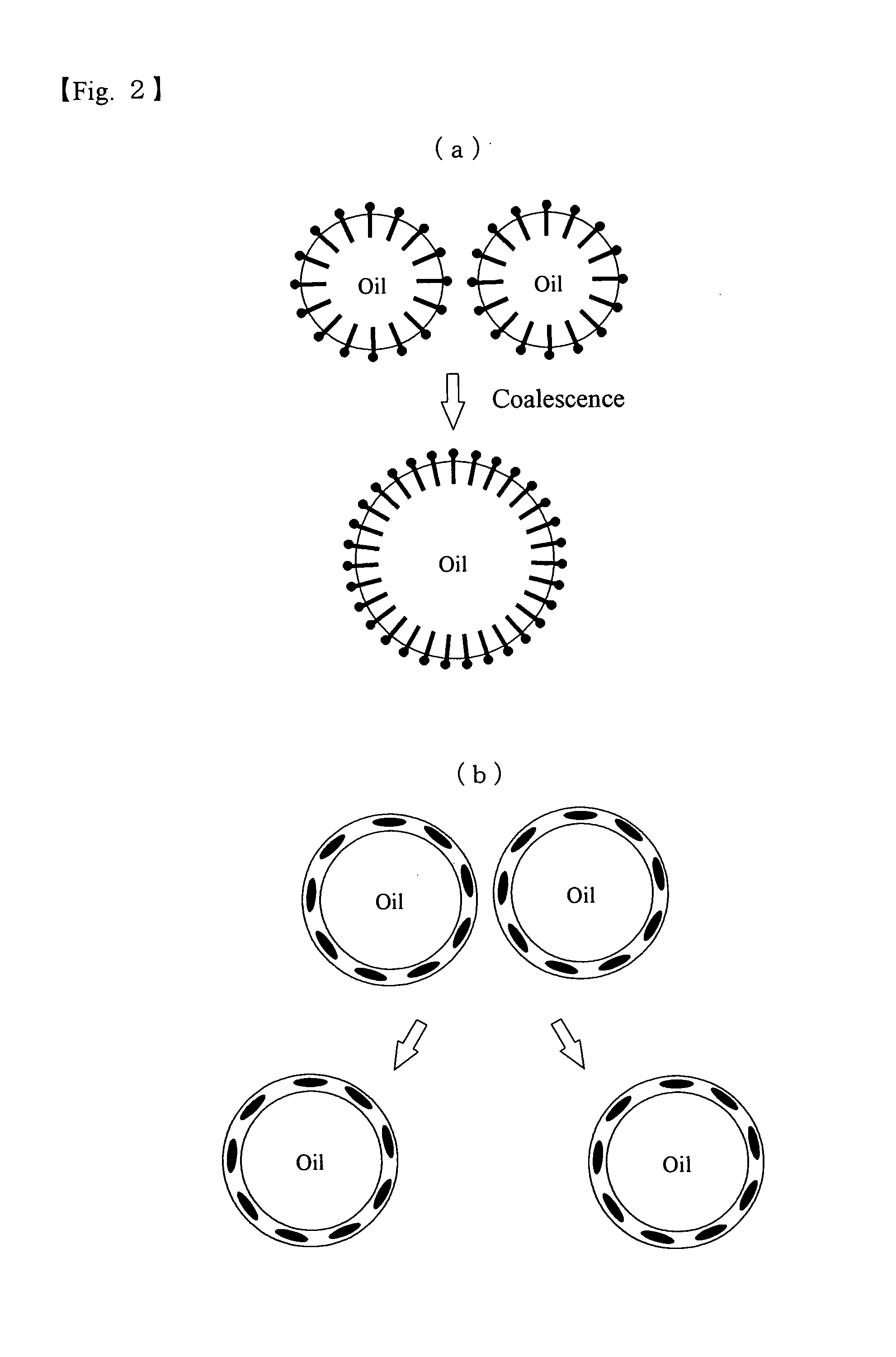Emulsification Dispersants, a Method for Emulsification and Dispersion Using the Emulsification Dispersants, Emulsions, and Emulsion Fuels
a technology of emulsification dispersants and emulsification fuels, which is applied in the direction of synthetic resin layered products, natural mineral layered products, chemical/physical processes, etc., can solve the problems of insufficient thermal stability and long term stability, and the inevitable generation of co or nox, so as to minimize the complexity and selection. the effect of effort and selection
- Summary
- Abstract
- Description
- Claims
- Application Information
AI Technical Summary
Benefits of technology
Problems solved by technology
Method used
Image
Examples
embodiment 1
[0067] (An Embodiment wherein Vesicles from Hydrogenated Caster Oil are Used as an Emulsification Dispersant)
[0068] As the vesicles from hydrogenated caster oil, among polyoxyethylene-hydrogenated caster oil derivatives, a derivative with an average number of 10 added ethylene oxide (EO) molecules (E) (from hereon HCO-10; molecular weight 1380 g / mol) is used.
[0069] It is known that the HCO-10 is hardly soluble in water and forms vesicles by assembling themselves in water (Ref. “Regarding a Formation of Vesicles of Non-ionic Surfactant Related to Poly(oxyethylene) Hydrogenated Caster Oil” Journal of Japan Oil Chemist's Society, vol. 41, No. 12, P.1191-1196, (1992), “Thermal Properties of Poly(oxyethylene) Hydrogenated Caster Oil Vesicle Dispersant Solution” Japan Oil Chemist's Society, vol. 41, No. 12, P1197-1202, (1992)), as shown in Table 2, although the average particle size depends on the concentration; however, at the stage of aqueous dispersion the particle size is 200 nm to ...
embodiment 2
[0072] For the purpose of examining the emulsified state of HCO-10 in a system of various types of oil agents, such as liquid paraffin and water, the concentration of the HCO-10, the emulsification dispersant of the water, and the concentration of the entire system were fixed as 10 wt % and 7 wt %, respectively, for which regular tap water was used for the water, and the emulsified state per each oil agent was examined after stirring for approximately five minutes by a normal stirrer at room temperature, thereby obtaining the results shown in Table 4.
TABLE 4Emulsification example (2) with HCO-10Emulsificationstability(1 month / roomEmulsifiedOil typeHCO-10Watertemperature)stateLiquid paraffin763◯O / W typeOlive oil763◯O / W typeSilicone (2 cSt)763◯O / W typeSilicone (5 cSt)763◯O / W typeSilicone (100 cSt)763◯O / W typeIsopropyl myristate763◯O / W typeHexadecane763◯O / W typeLimonene763◯O / W typeTocopherol763◯O / W type(Vitamin E)
Figures are shown in wt %. Oil content is 30 wt %.
[0073] As seen from ...
embodiment 3
[0074] (An Embodiment wherein Distearyldimethylammoniumchloride is Used as the Emulsification Dispersant)
[0075] Next, an embodiment wherein distearyldimethylammoniumchloride is used as an emulsification dispersant is described. The emulsified state of liquid paraffin using this emulsification dispersant was examined, and the results are shown in Table 5. With approximately 0.5 wt % or over, a favorable state was obtained. Furthermore, even with silicone oil, a favorable state was obtained as shown in Table 6.
TABLE 5No.123Emulsifier0.52.55Water49.547.545Liquid paraffin505050Emulsified stateO / W typeO / W typeO / W typeEmulsification stabilityΔ◯◯(1 month / room temperature)
◯: No phase separation,
Δ: Separated due to difference in specific gravity (coacervation),
X: Separated
Figures are shown in wt %.
[0076]
TABLE 6Emulsifier3.1Water59Silicone oil (2 cs)37.9Emulsified stateO / W typeEmulsification stability◯(1 month / room temperature)
◯: No phase separation
Figures are shown in wt %.
PUM
| Property | Measurement | Unit |
|---|---|---|
| particle size | aaaaa | aaaaa |
| particle size | aaaaa | aaaaa |
| particle size | aaaaa | aaaaa |
Abstract
Description
Claims
Application Information
 Login to View More
Login to View More - R&D
- Intellectual Property
- Life Sciences
- Materials
- Tech Scout
- Unparalleled Data Quality
- Higher Quality Content
- 60% Fewer Hallucinations
Browse by: Latest US Patents, China's latest patents, Technical Efficacy Thesaurus, Application Domain, Technology Topic, Popular Technical Reports.
© 2025 PatSnap. All rights reserved.Legal|Privacy policy|Modern Slavery Act Transparency Statement|Sitemap|About US| Contact US: help@patsnap.com



